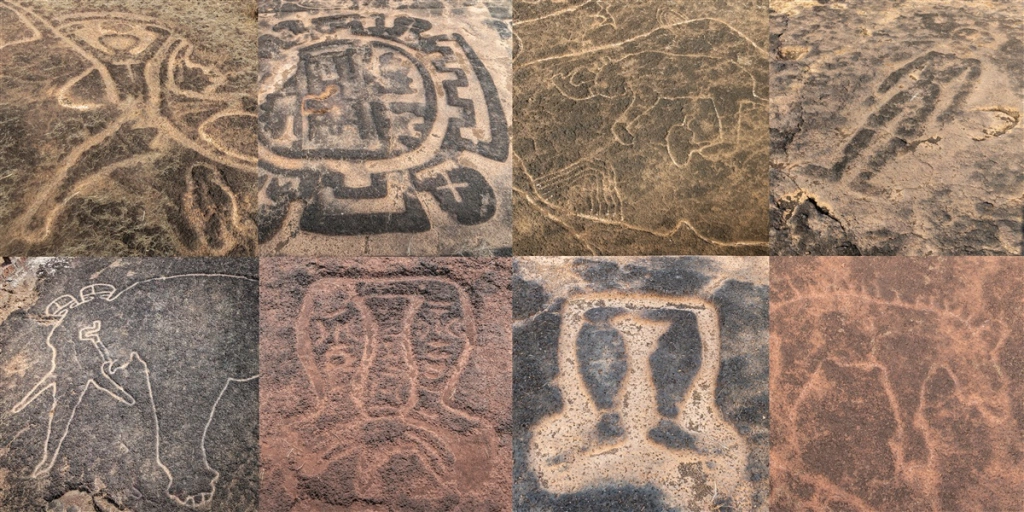Why in the News?
The prehistoric geoglyphs of the Konkan coast may date back as far as 24,000 years, based on new stratigraphic evidence from Koloshi caves in Maharashtra.

About Konkan Geoglyphs:
- Overview: Prehistoric rock engravings (geoglyphs/petroglyphs) carved on laterite plateaus of the Konkan coast (Maharashtra, Goa, southern Karnataka).
- Depictions: Humans, animals (elephants, tigers, rhinos, stingrays, turtles, peacocks), and abstract motifs.
- Technique: Created by scooping, etching, pecking into laterite; grooves 3–5 cm deep, 3–4 cm wide.
- Unique Feature: Unlike painted caves (e.g., Bhimbetka), these are open-air geoglyphs, rare in India.
- Cultural Value: Provide insights into prehistoric ecology, rituals, and transition from hunter-gatherer to agrarian societies.
Important Sites:
- Maharashtra (Ratnagiri–Sindhudurg): Ratnagiri alone hosts 1,500+ carvings across 210 sq. km.
- Kasheli: Giant elephant (13×18 m), 125+ carvings of sharks, stingrays, rhinos (though locally absent), tigers.
- Barsu: Human figure flanked by two tigers, resembling Harappan seals. Local are protesting a proposed oil refinery which might demolish this site.
- Rundhye Tali: Concentric circles, abstract motifs, jellyfish/tiger outlines.
- Devache Gothane: Standing human figure; linked to magnetic deflection anomaly.
- Devi Hasol: Snake-like square design (8 m); still part of Aryadurga temple rituals.
- Jambharun, Ukshi, Kudopi: Faunal + abstract petroglyphs.
- Goa:
- Usgalimal (Phansaymal): Bulls, deer, spirals, cup marks, grinding grooves.
History and Antiquity:
- Dating: Traditionally ~10,000 years old; new excavations at Koloshi caves push age back to 24,000 years (cultural layers ~38,000 years).
- Continuity: Geoglyph-making persisted till the early historic period, showing ritual and symbolic evolution.
- Ecological Record: Depict species long extinct in Konkan (rhinoceros, hippopotamus), indicating Pleistocene fauna.
- World Context: Compared with Nazca Lines (Peru), Atacama Giant (Chile), and Blythe Intaglios (US) — Konkan geoglyphs are smaller but more intricate and ecologically detailed.
- UNESCO Status: On India’s Tentative List (2022); nomination under preparation for 2027–28 cycle.
| [UPSC 2024] Consider the following properties included in the World Heritage List released by UNESCO:
1. Shantiniketan 2. Rani-ki-Vav 3. Sacred Ensembles of the Hoysalas 4. Mahabodhi Temple Complex at Bodhgaya How many of the above properties were included in 2023? Options: (a) Only one (b) Only two* (c) Only three (d) All four |
Get an IAS/IPS ranker as your 1: 1 personal mentor for UPSC 2024

